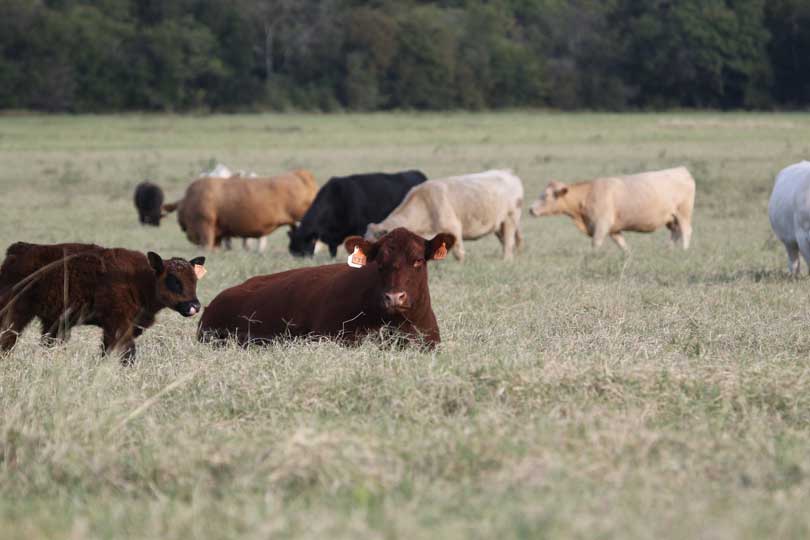By Justin Walker
Communications Specialist
Recent rainfall could mean higher rates of internal parasites in Texas cattle.
Increased rainfall often results in higher parasite populations, which could cause problems for herds across the state.
Forage growth and warm weather provide opportunity for large parasite populations to grow and become readily ingested by grazing cattle.
“The primary concern in beef cattle production is the brown stomach worm,” Tracy Tomascik, Texas Farm Bureau associate director for Commodity and Regulatory Activities, said. “It steals all the nutrients from the host animal and harms growth and health.”
As an adult, the worms live in cattle’s stomach wall, where they lay eggs, Tomascik said. From there, the eggs exit the body in manure and hatch on the ground. They are later consumed as larvae in the surrounding grass, and the cycle repeats.
One of the first symptoms is loss of body condition, which is important to monitor during the winter months. Beyond that, general cattle thriftiness will decline, and in some cases, anemia will set in.
“That would be a terrible internal parasite infestation if it reached that point,” he said.
Treatment methods often vary by herd, Tomascik said. However, there are several options to combat the infestation.
Endectocides, antiparasitic drugs that target internal parasites, come in two families, Tomascik said. One is widely available as a pour-on or injectable method, and the other is an oral treatment.
Each method has its own advantages and disadvantages, he said.
“Some will have a longer duration, which reduces treatment intervals,” he said. “There are some long-term products and one that can last up to 150 days. Most of them come with a withdrawal timeline.”
Tomascik said the duration of effectiveness and withdrawal periods should be considered when selecting a treatment method.
“There are products out there that are pour-on that don’t have a withdrawal time,” he said. “So, there are products to meet every need.”
When it comes to oral treatments, there are a couple of options, Tomascik said. The most common method is an oral drench. The other formula is a feed option, commonly found in a dewormer cube, he said.
A best management practice for endectocide application is consultation with your herd veterinarian before treatment. Parasitic populations could have varied susceptibility to endectocides and your veterinarian is often the best source of local knowledge.

